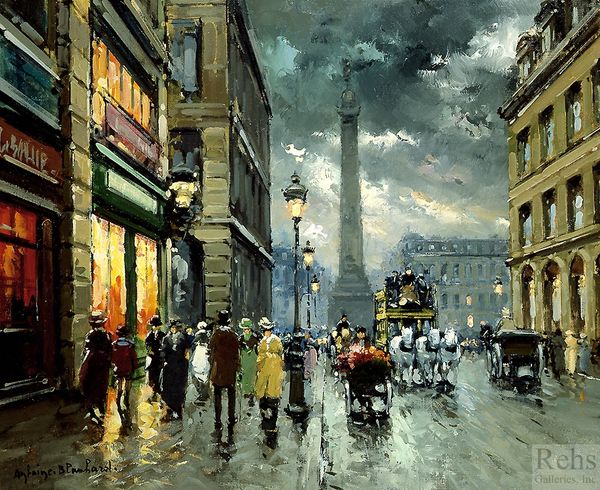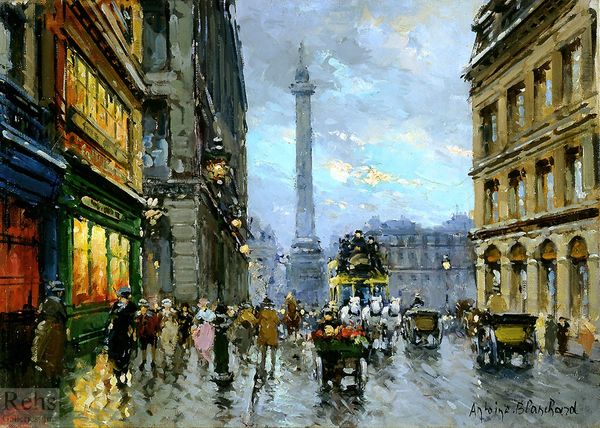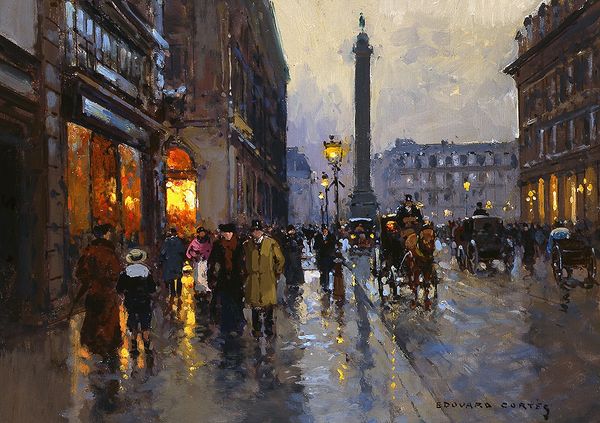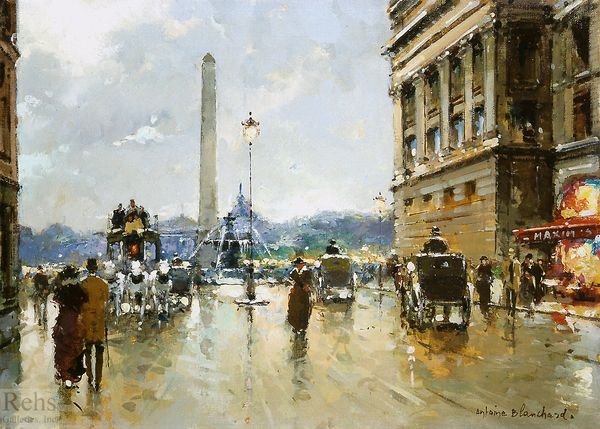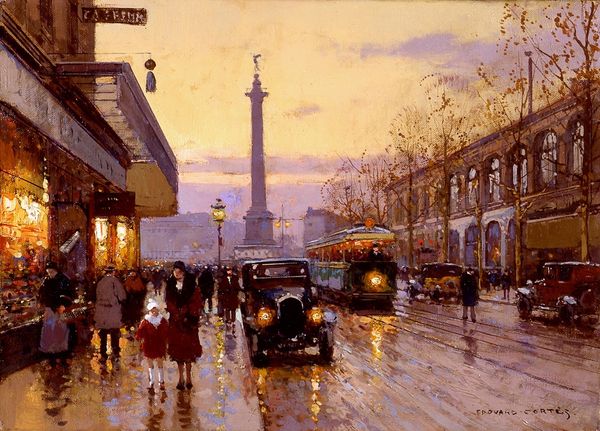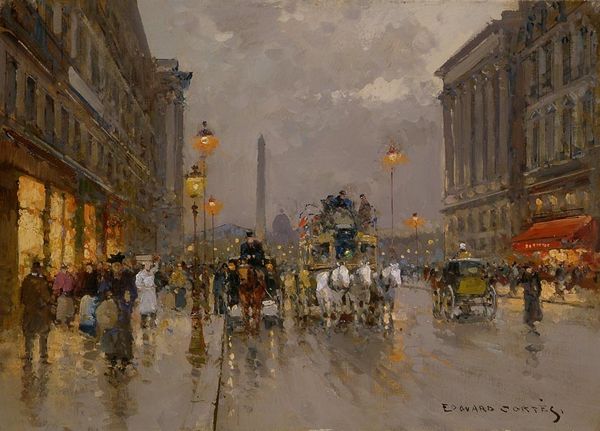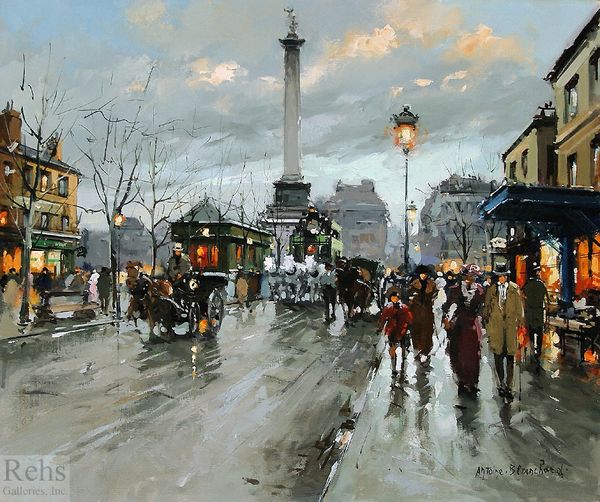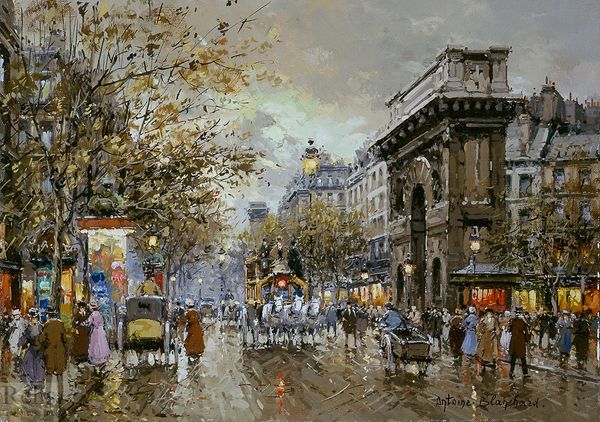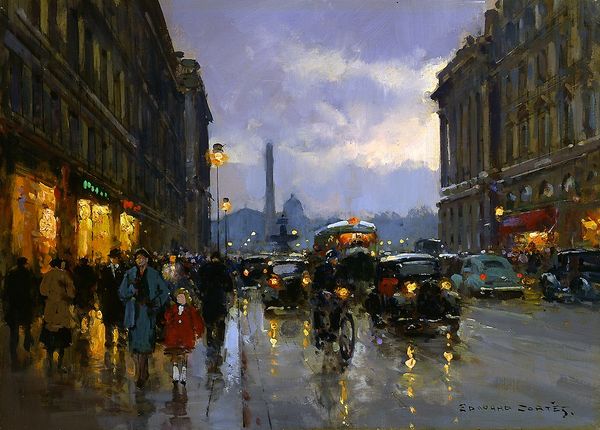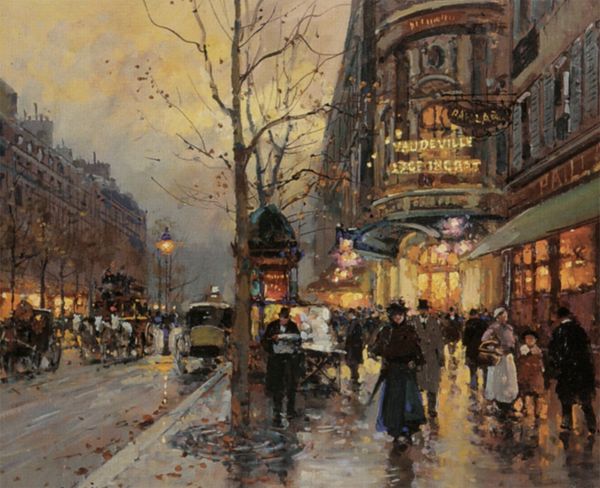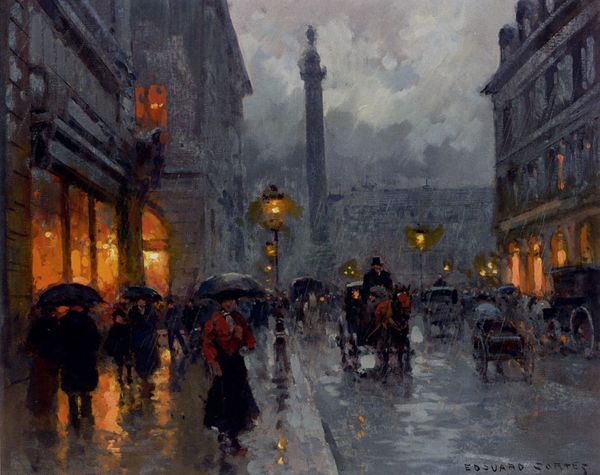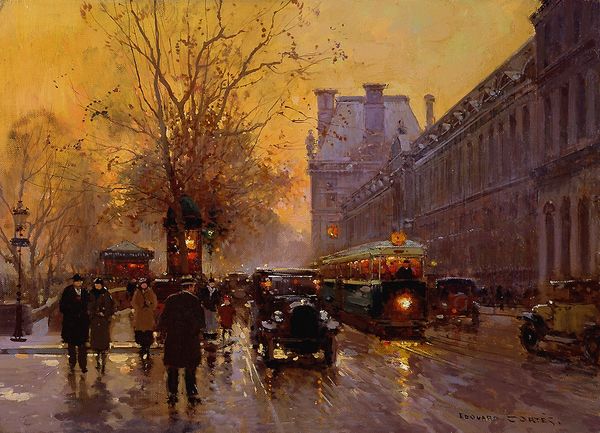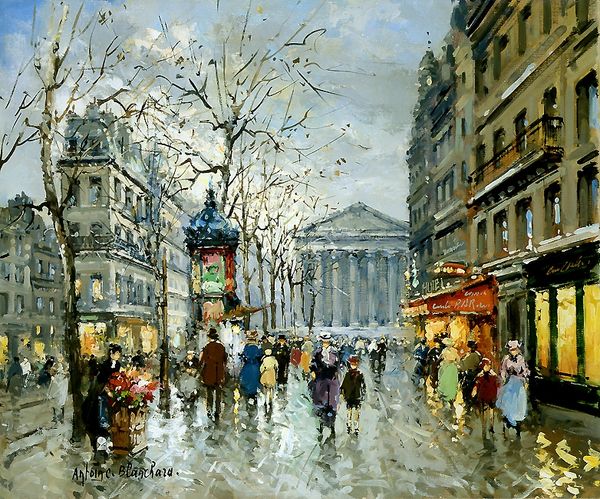
painting, oil-paint
#
urban landscape
#
flâneur
#
painting
#
impressionism
#
street view
#
impressionist painting style
#
oil-paint
#
vehicle
#
house
#
urban cityscape
#
impressionist landscape
#
figuration
#
oil painting
#
city scape
#
road
#
urban art
#
square
#
men
#
cityscape
#
genre-painting
#
street
#
building
Copyright: Antoine Blanchard,Fair Use
Curator: Oh, I just love the overall mood of this painting. It’s Antoine Blanchard’s “Rue de la Paix Place Vendome”, and I get a distinct sense of a melancholic day in Paris, rain slicking the cobblestones. Don’t you feel it? Editor: Absolutely. There is definitely something elegiac about this scene. Let’s consider that the depiction of this bustling street with the Place Vendome, a historical monument of power, in the background serves not only as an urban landscape, but also seems to whisper questions about class, spectacle, and historical memory within the modern Parisian experience. Curator: That’s a rather... grand interpretation. For me, it's simply about capturing the light reflecting off the wet street, the warm glow of the shop windows contrasting with the grey sky. It's painterly in a way that invites me in, makes me want to pull up my collar and keep going anyway. Editor: And who exactly has access to the “charm” that Blanchard presents, let’s pause for a second to note the presence of an imposing obelisk constructed, paradoxically, during the reign of Louis-Philippe, that’s the July Monarchy—this monarchy which aimed to create a middle ground, became one remembered as socially polarized. The men are visible in suits and hats as the horse carriages make way for the scene of Parisian aristocracy at play. Curator: So you are suggesting the cobblestones may reflect a distorted reality available only to the wealthy? Editor: It wouldn't be out of place. Let’s also consider how this is an oil painting and thus brings in a very distinct perspective when we contextualize art in the twentieth century with flaneur culture. As new modes of production began arising and the industrial revolution swept nations globally—it feels important to acknowledge the place of Impressionism as one rooted in reflecting modern life as Baudelaire conceptualized it; where one can escape and yet cannot run away. Curator: Hmm, never thought about it that way before. Still, the brushstrokes, the sheer energy...It’s as if you’re really *there*, dodging carriages, catching a glimpse of something beautiful despite the rain. I imagine being able to people-watch there even if it wasn't from firsthand experience. Editor: Yes, a mediated “there," carefully constructed. Still it’s impossible to simply *experience* Paris—a place layered with so much history. Curator: Well, for me, “Rue de la Paix Place Vendome" has really unlocked something more and beyond that today, even if it's just a flicker of beauty and intrigue amidst a city caught in perpetual transformation. Editor: Absolutely, by seeing this artwork through its socio-political construction—a mirror reflecting historical power structures that often hide in plain sight.
Comments
No comments
Be the first to comment and join the conversation on the ultimate creative platform.
